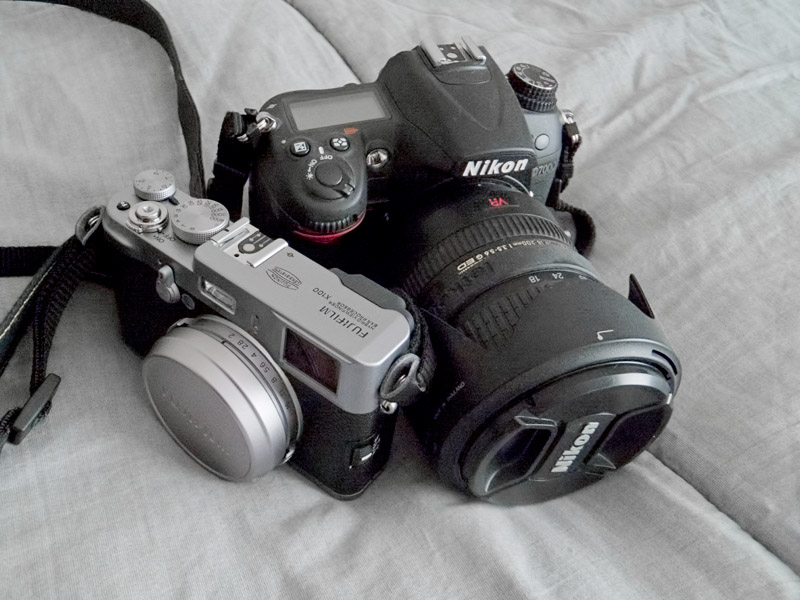I think it’s obvious that I would find this comparison interesting. Some of you might also. The X100 is a relatively compact camera (similar in size to my memory of the Olympus Trip 35 that I owned in my mid-teens) and therefore makes a pretty good street camera and might make a good vacation camera.
The D7000 is also relatively compact (for a dSLR) and makes a wonderful vacation camera when paired with the 18-200VR for a very useful 27-300mm effective focal range.
Obviously, these two will likely appeal to different people for the simple reason that there are very significant differences between them. The kind of differences that are not subtle. So here I will start with the two differences that may override all others: size, and reach.
Having a very fast 35mm (effective) lens on an APS-C sensor is pretty awesome. You can shoot nice images with excellent subject isolation, exactly as I described in part 1 of this review series. You can use the macro feature to move right in on a subject, and you can zoom with your feet it you need to get closer in order to fill your frame. Of course, there are limitations to all these things, but they can be done and many will be satisfied with that.
The D7000 kit, on the other hand, cannot quite get as close at the same 35mm EFL (effective focal length), but has more pixels for cropping, and so can still do a creditable job of exposing fine details on a subject. And it gets pretty good magnification at 200mm, which does a nice job of throwing backgrounds out of focus as well.
But there is no countering the sheer size difference. To see that, we need to look at the two of them together, as shot by the F550EXR in low light at 3200ISO, f/4 and 1/13s. That’s very low light! Needless to say, the image suffers somewhat, but there are enough crisp details to show us exactly what we want to see … the two cameras and their relative sizes.
Now, before I get any smug comments on the massive difference in size, most of this difference comes down to the lens, which of course gives me 27-300mm EFR (effective focal range), which compares pretty favorably against 35mm FFL (fixed focal length.)
So with such a large difference in flexibility, one must pay a price. Imagine instead that I had simply mounted a 35mm 1.8G (an AFS lens) on the D7000 or even more accurately, a 24mm 2.8 (1.8 were I rich.) They’d be a lot closer together in size and function, although the Fuji would clearly remain smaller.
I wish that I had access to one of those small primes for this test as it would make things more interesting. Perhaps at some point I will shoot the 50mm 1.8D against the Fuji, but that will require shooting the two at much different distances to equalize the angle of view.
So … the Fuji can be said to take round one of the comparison if size is everything. Or if shooting a very small and very fast prime matters most. If flexibility is more important, then the D7000 wins running away.
